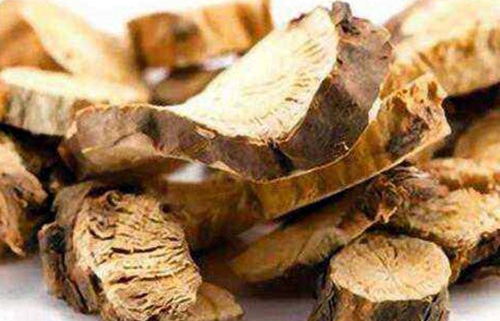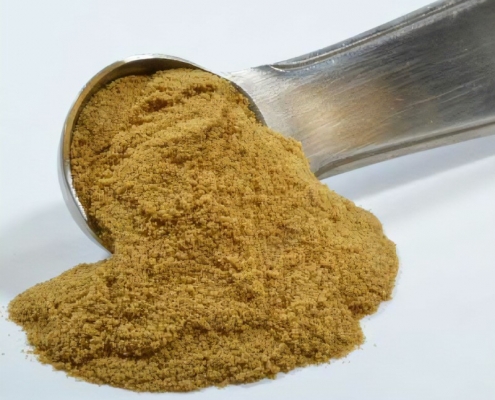How is plant polysaccharide extracted?
Plant polysaccharides are compounds composed of many same or different monosaccharides with a or P glycosidic bonds, which are derived from plant cell metabolism and widely exist in plants in nature, including starch, cellulose, polysaccharide, pectin and so on. Its properties are very different from those of monosaccharides, such as sweetness and strong reducibility have disappeared. According to their functions in plants, they can be divided into two categories: one is to form plant supporting tissue, such as cellulose; One is plant storage nutrients, soluble in hot water into a colloid solution, enzyme hydrolysis can release monosaccharides to supply energy, such as starch, inulin, etc..
A wide variety of plant polysaccharides come from different parts of different plants. Generally, plant cell walls are relatively firm, requiring special cell breaking operations before extraction, including mechanical crushing, swelling and self-swelling, chemical treatment and biological enzyme degradation. Therefore, different methods were used to extract polysaccharides from different plants, including solvent extraction, acid extraction, alkali extraction, enzymatic hydrolysis, ultrafiltration, ultrasonic enhancement, microwave method.
Solvent Extraction
Solvent extraction is a common method to extract polysaccharides from plants, which should follow the principle of size-phase dissolution. Polysaccharides are polar macromolecular compounds. Among all solvents, water and ethanol are typical strong polar solvents, which have strong penetration into plant tissues, high extraction efficiency and safe use.
Water has strong penetration to plant tissue, high extraction efficiency, safety and economy. When extracting polysaccharides with water as solvent, they can be extracted with hot water or cold water. Generally, plant polysaccharides are extracted by hot water extraction method, which can remove small soluble substances directly or by centrifugation. Or using the insoluble property of polysaccharides in high concentration ethanol, precipitation purification of polysaccharides; However, it can also be used for the fractional separation of different polysaccharide components in samples because of the different properties or different relative molecular weights of polysaccharides. According to the different properties of polysaccharides, different polysaccharides from plants can be separated by mixed solvent extraction in different stages. Among them, ethanol precipitation is the most common. However, the content of polysaccharide in the cell wall was high and the direct extraction rate of hot water was not high. At this point, the cell wall should be destroyed to increase the dissolution of polysaccharides: enzymatic decomposition and weak base dissolution methods.
Acid-base extraction method
Some polysaccharides are suitable for extraction with dilute acid and can obtain higher extraction rate. However, acid extraction method only has advantages in some specific plant polysaccharides. This method is not widely used, and the operation is strictly controlled by acidity, because acidic conditions may lead to the breaking of glycosidic bonds in polysaccharides.
Some polysaccharides have higher extraction rates in lye, especially those containing uronic acids and acidic polysaccharides. The dilute alkali is mostly 0.1 mol/L sodium hydroxide and potassium hydroxide. In order to prevent the degradation of polysaccharides, nitrogen is usually used or sodium or potassium borohydride is added. Similarly, the advantage of alkali extraction also varies with different polysaccharides. Similar to acid extraction, the concentration of alkali in alkali extraction should be controlled effectively because some polysaccharides will hydrolyze when they are more alkaline. In addition, dilute acid and dilute alkali extracts should be quickly neutralized or quickly dialysis, concentration and alcoholysis to obtain polysaccharide precipitation.
Biological Enzyme extraction method
Enzyme technology is a biotechnology widely used in the extraction of active ingredients in recent years. In the extraction process of polysaccharides, enzymes can reduce the extraction conditions, decompose plant tissues in relatively mild conditions, and accelerate the release or extraction of polysaccharides. In addition, the use of enzymes can also decompose starch, pectin, protein and other products in the extract, the commonly used enzymes are protease, cellulase, pectinase and so on.
Ultrasonic Extraction
Ultrasonic is a kind of high-frequency mechanical wave, its main principle is to use ultrasonic “cavitation effect” of the destruction of the cell membrane, has planted the release of active ingredients, and ultrasonic wave to form powerful shock waves or high-speed jet, can effectively reduce and eliminate the block between water phase and layer, increase the mass transfer efficiency, contribute to the spread of the solute. In addition, the thermal effect of ultrasonic makes the water temperature at 57℃.
Compared with the conventional extraction method, ultrasonic extraction has been widely used in the extraction of plant polysaccharides due to the short extraction time and high extraction rate, such as pumpkin total sugar, reducing sugar and polysaccharide, kelp polysaccharide, glycyrrhiza polysaccharide, seaweed polysaccharide extraction. However, it is restricted by ultrasonic time, ultrasonic frequency (generally, extraction efficiency is high in low frequency, but there are exceptions), solid-liquid ratio and temperature.
Microwave Extraction
A microwave is a non-ionizing electromagnetic wave with a frequency between 300MHz and 300GHz. The principle of microwave extraction is that micro-rays radiate into the solvent and reach the cell interior through the cell wall. As the solvent and cell fluid absorb microwave energy, the temperature inside the cell increases and the pressure increases. The active components located inside the cell are released from the cell and transferred around the solvent to be dissolved by the solvent.
Microwave technology was applied to plant cell wall breaking and the yield was increased effectively. It has the characteristics of strong penetration, high selectivity and high heating efficiency. The main factors affecting microwave extraction are extraction time, water content of sample and extraction solvent, dielectric constant and conductivity of solvent (the solvent with dielectric constant and conductivity has better microwave absorption), microwave power and so on.
This method has a short extraction time and high extraction rate, which is a new auxiliary extraction technology with great development potential to enhance the solid-liquid extraction process. It can be used for the extraction of polysaccharide from brassica juncea, scutellaria chinensis, Cherry cherry, anemone polysaccharide, laver polysaccharide and tea polysaccharide. However, microwave leakage can cause harm to operators, which limits the research and application of microwaves.
Riotto botanical co., ltd. is a professional manufacturer and supplier of plant extract and nutritional ingredients from China and has been in this field for more than 11 years. If you are looking for a reliable plant polysaccharide powder supplier, you have come to the right place, please contact [email protected] for further discussion.




